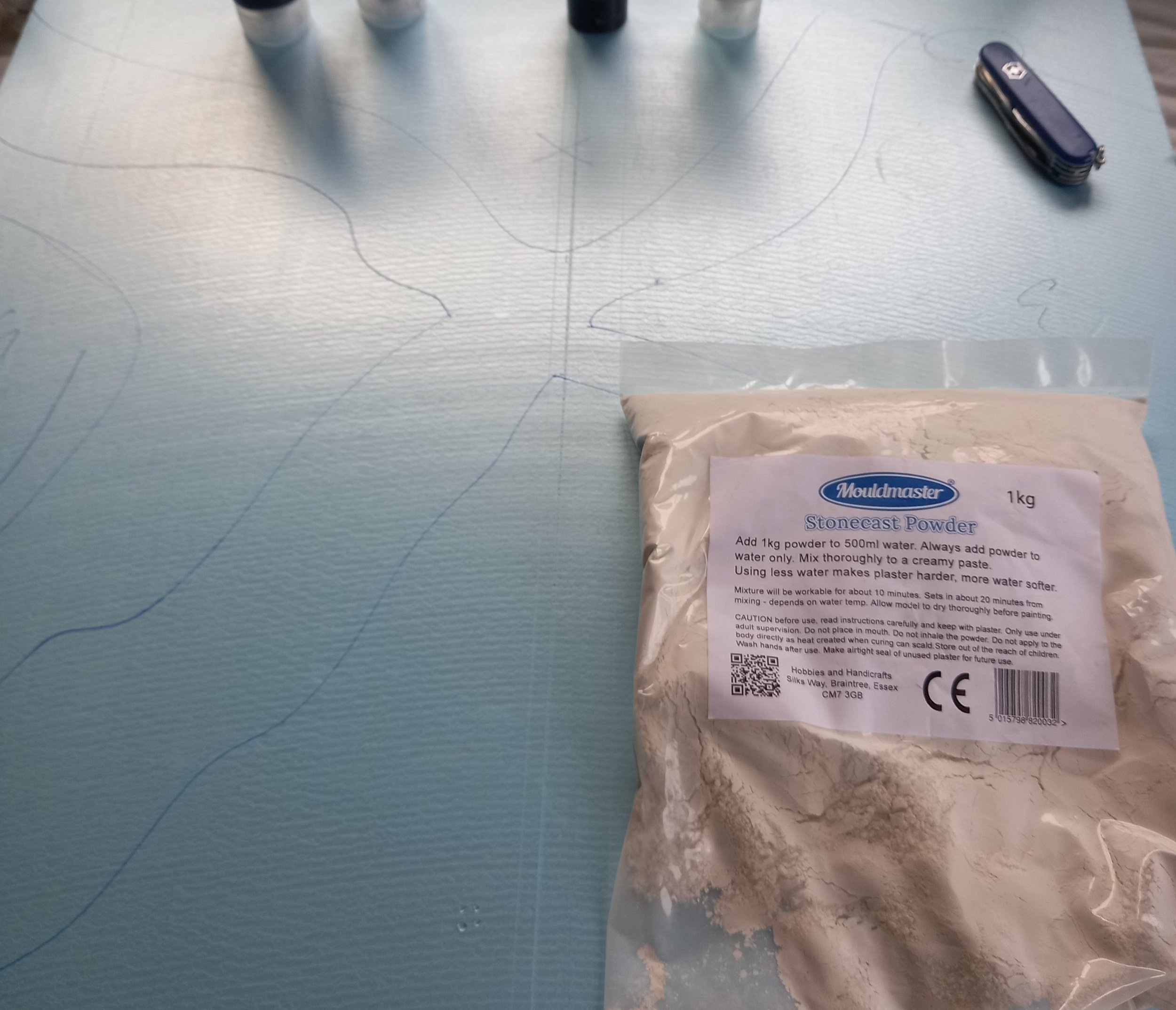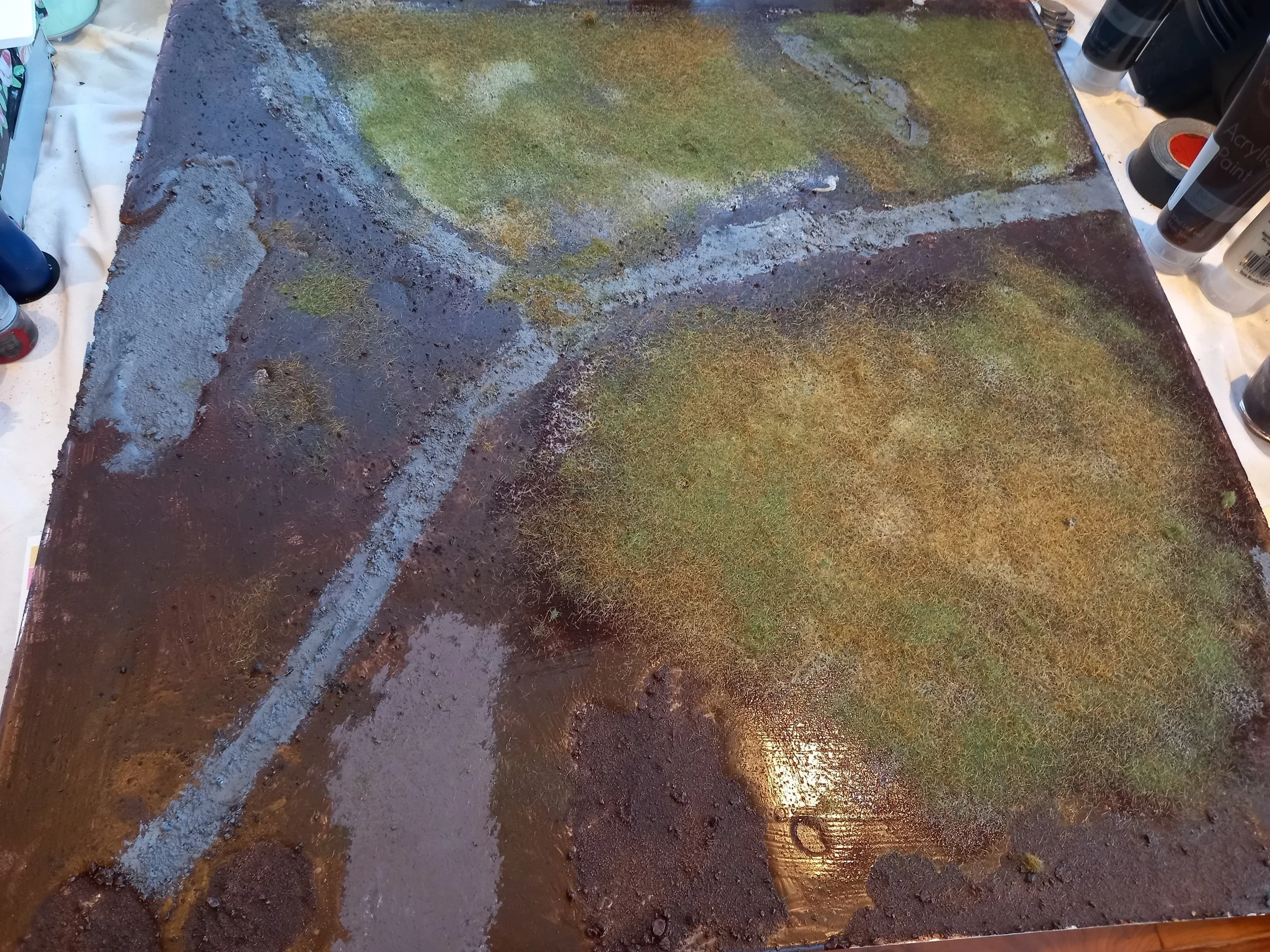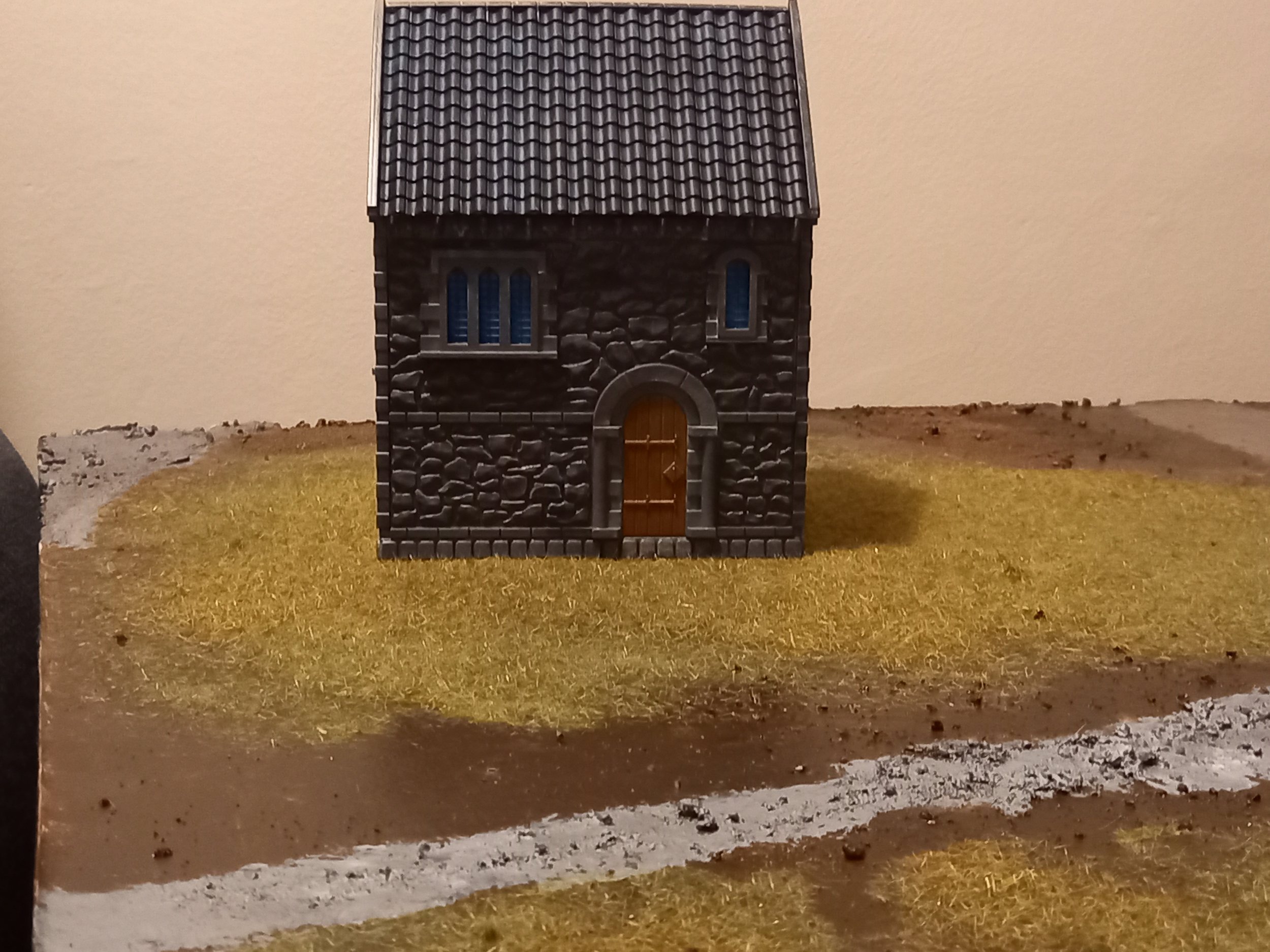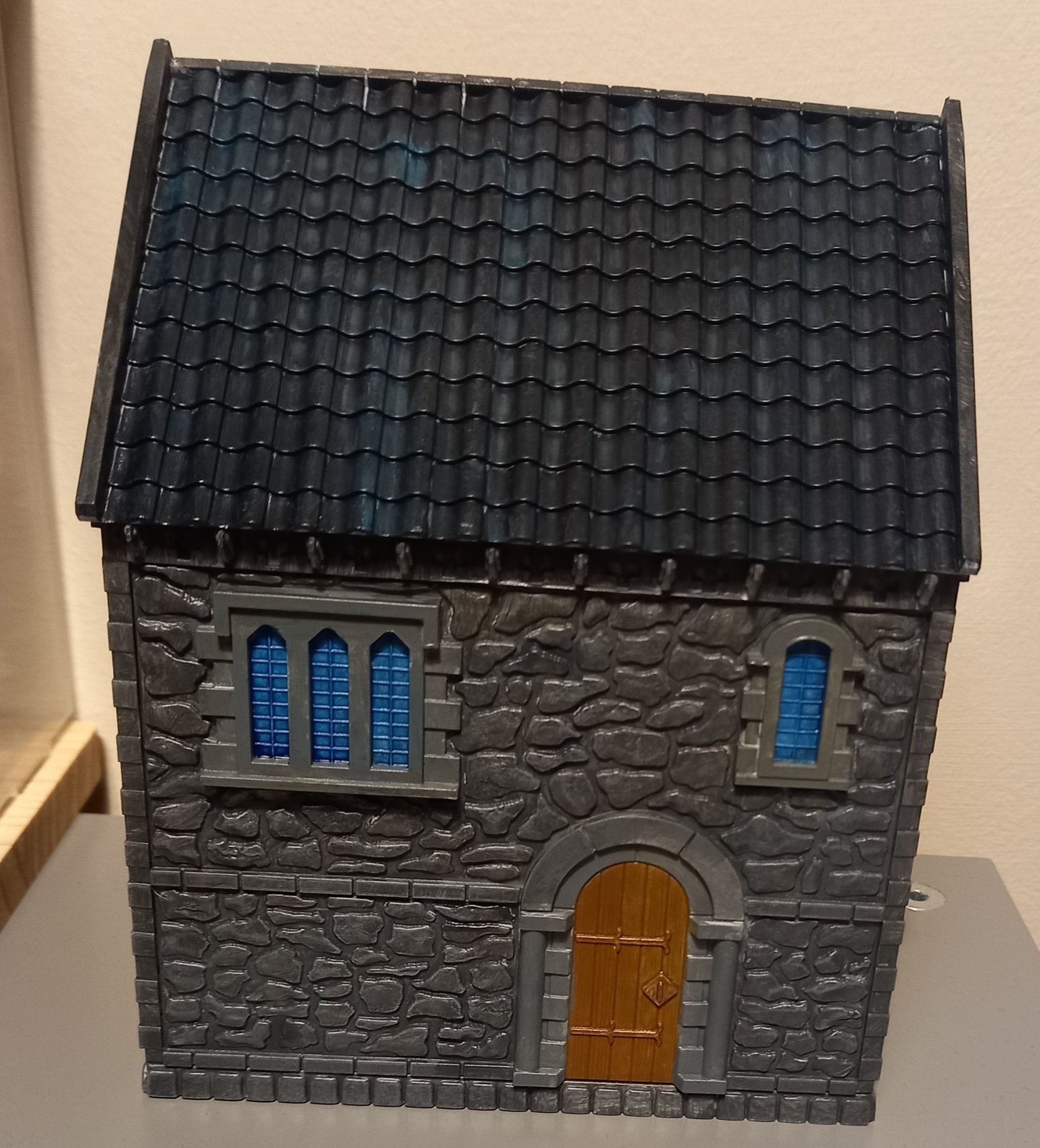Miniature worlds, Maximum investment
For a long time now, I’ve had my eye on creating a board to play tabletop games on. Battlemats are a nice looking solution, but they lack the texture of three dimensional boards and whilst they are presented as a cheap and easy to store alternative to a board, they don’t seem all that cheap to me, usually clocking in around £100. So I set out to make a 2 foot by 2 foot (61cmx61cm) board of my own. My requirements were as follows:
The board should be easy to store. This means that I will not be gluing anything down that would add significant height.
It should offer the possibility for expansion in the future.
The board should be suitable for use in fantasy or science fiction settings. In the end I went for a rough path through a muddy grass field, a setting agnostic choice.
It should be cheap. The buy in price for this project was something like £70, however I was left with 4 2x2” polystyrene sheets and half of my plaster.
It should be durable, or at least not fragile. I would argue that I did not achieve this.






I started out by taping off the edges of the board to prevent liquid plaster from spilling over the edge. Then I mixed the plaster (Outdoors, wearing a respirator), adding powder to water until the consistency started to change from “watery” to “noticeably thick”. At first I tried to use a spatula to spread the plaster, but this didn’t work very well, so I poured out the liquid plaster and picked up the entire board, gently shaking it in an orbital motion, to cover most of the XPS foam. Plaster curing took about 45 minutes. After 6 or so hours it had reached something like full hardness and I was unable to scratch it with a fingernail. After this I glued sand to the board with PVA glue and allowed it to dry overnight. The board was then sealed by painting with a mixture of mod-podge, water and brown paint (approximate ratio of 2:1:2). This left noticeable streaks when applied by brush, so I applied the second and where needed third coats by sponge.
Two types of grass flock (2mm) were applied to areas covered in PVA glue and in place of a static grass applicator I used a balloon that I had rubbed on my shirt to try and orient the “grass” blades upwards. After this had dried I painted the edges black with a paint/water/modpodge mixture.
Overall I’m happy with how the board came out considering it is my first time using many of these materials, but here are some takeaways for next time. 1) This particular plaster is very hard and whilst the thicker portions (~1cm) seem very sturdy, the edges were prone to crumbling due to how thin and therefore brittle the very edge was. It might be better to apply texture material directly to the foam in future. 2) The PVA foam used for the grass left an extremely glossy finish. If I had more flock to hand I would have saturated the board to make sure that the gloss finish wouldn’t be visible at the end.
The board is indeed easy to store due to its low profile, and whilst it holds up to normal handling within the house, I think the plaster would be liable to crack if it were dropped face down or received a sharp blow. I might try this on another board in the future as it occurs to me that it might be possible to get an interesting pattern for a cracked earth or magma-crust like effect.